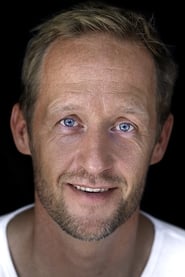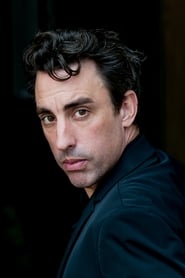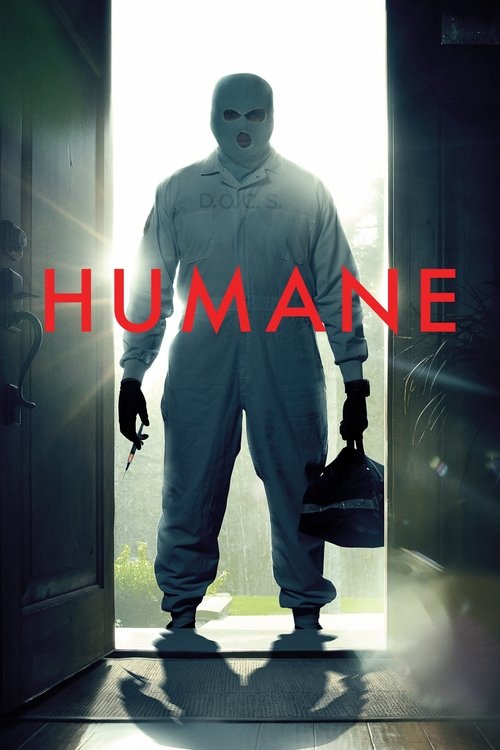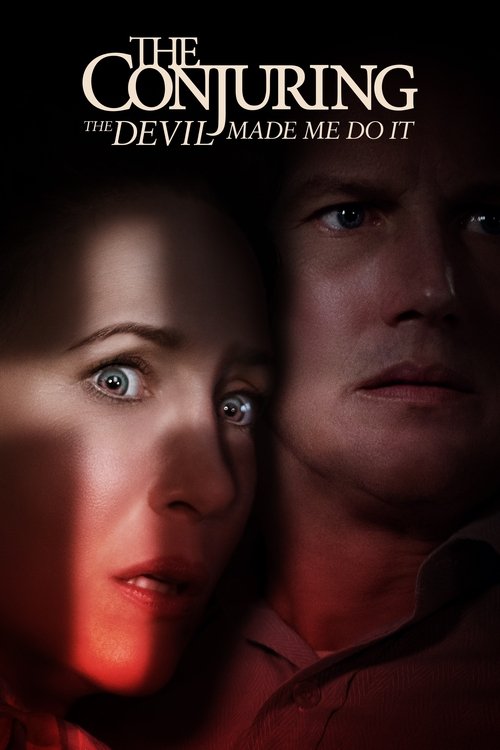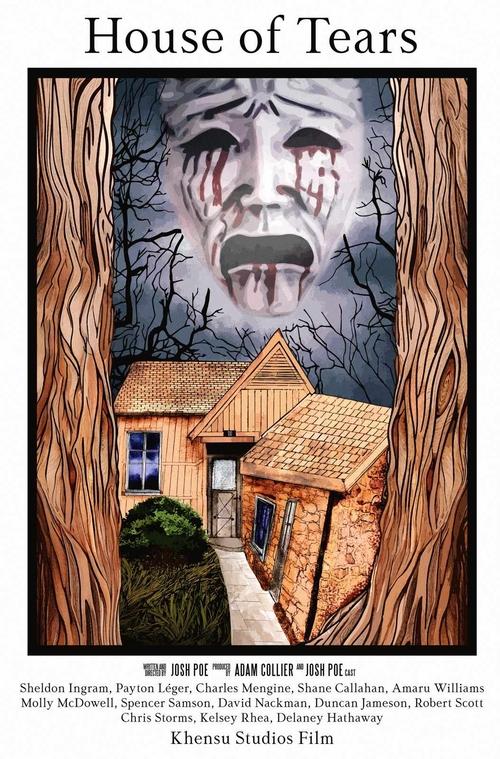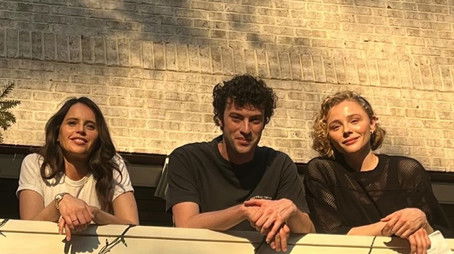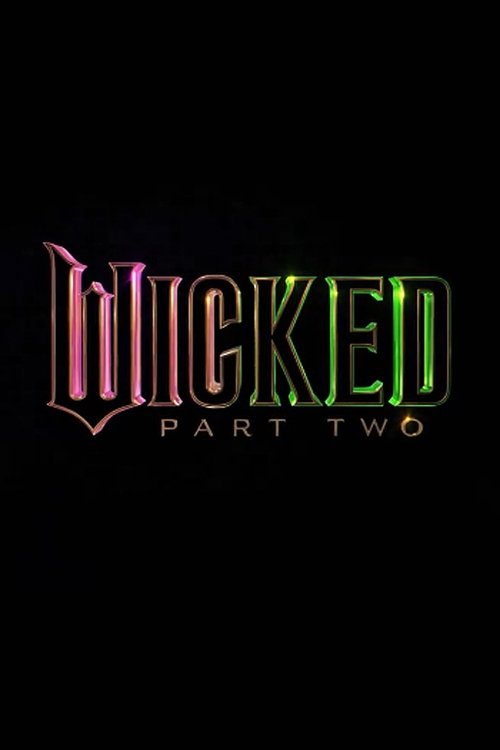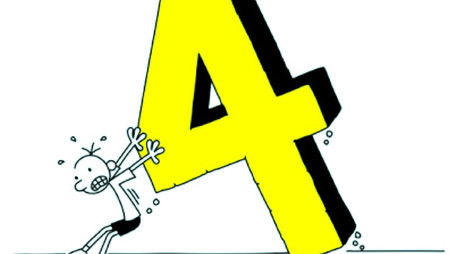
Ask Your Own Question
What is the plot?
An American social psychologist named Ben is living in Berlin and attempting to piece his life back together after a separation from his wife in California. He teaches at a local college, conducts research, and writes books about the dynamics of cults and group conformity. His sixteen‑year‑old daughter Mazzy arrives from the United States to spend a semester at an English‑language school, and Ben tries to settle her into the unfamiliar city while managing his work and a growing case that begins to consume his attention.
The film opens with a forensic investigation at a suburban house where a large number of people lie dead. Nina, a forensic detective who works with the police, brings Ben and his colleague Max to the scene and describes the manner of death: the victims ingested cyanide in a staggered sequence so that they all died in succession, and each corpse holds a small seashell in its mouth while a dark smear marks the cheek. Nina emphasizes how deliberately the deaths were arranged; the details suggest ritual and collective planning rather than a spontaneous outbreak of violence. Ben, alarmed by the discovery and anxious about Mazzy's safety in a new city, urges her to come to his apartment. Mazzy sets out by train but becomes uncertain at the station; a local young man named Martin approaches her, offers directions to Ben's neighborhood, introduces himself as someone who lives nearby, and exchanges contact information. Martin's manner is calm and attentive, and Mazzy accepts his help.
Over the next days Mazzy begins to adapt to Berlin. She attends classes at her English school, explores the city, strikes up friendships, and spends time with Martin. She meets a girl named Lotte and, separately, a teenager called Larissa. Mazzy visits Elsa, the daughter of Ben's colleague Max, but leaves when Elsa refuses to go out. Mazzy and Larissa drift to an underground club, and Mazzy experiments with substances and new social scenes in the city. In the club a man pushes at Mazzy to dance; Larissa intervenes, and the situation escalates. Martin arrives and, to protect the girls, breaks a bottle and stabs the man who was accosting Mazzy. The assailant is injured during the scuffle; the girls are shaken and intoxicated, so they decide to sleep in a nearby park. The next morning Martin checks on them, helps them to safety, and calls emergency services for the wounded man, demonstrating a protective side that deepens Mazzy's trust.
Meanwhile Ben follows leads in the investigation of the suburban deaths. He listens to interviews of people tied to the group: one recruit speaks only through a closed door; others offer evasive answers that suggest secrecy and a controlled inner circle. Nina shares discoveries with Ben and Max about the ceremony-like aspects of the killings: the cyanide, the shells, the black smears. In a separate development a young woman is found drowned in a lake with stones in her pockets. Nina and the team process the scene; Nina examines the body and initially treats this lake death as different from the house mass deaths and tells Ben to consider it an isolated incident, but she records the physical facts of the drowning and the added weight in the victim's clothing.
Ben's professional curiosity and paternal concern pull him in different directions. He grows closer to Nina during the investigation, and they share moments that blur professional boundaries. Ben notices moments in her private life that he does not expect--once he sees Nina kissing another woman outside a bar--and tension between intimacy and mystery builds. He pursues the case relentlessly, interviewing former associates of the deceased and tracing the social networks that brought people into the group.
Flashbacks reveal Martin's life before meeting Mazzy. He lives alone in a flat where memories of his grandmother linger; she was the central family figure in his life until she died suddenly. Martin mentions in passing that his parents died in a car crash when he was a child. He becomes involved with an activist collective that stages environmental protests, attending rallies and participating in group meditations. A woman named Hilma leads the activist circle; Hilma cultivates group therapy sessions, guided meditations and tightly bound communal practices. Martin brings Lotte into that group, introducing her to Hilma's gatherings. The group couches its communal exercises in language of shared purpose, and Hilma emerges as a charismatic organizer at the center of a tight inner ring.
As Ben traces the victims' links, he discovers that some of the people he has interviewed are connected to Hilma and her circle. One interview subject, kept behind a locked door during questioning, refuses to speak openly; Ben senses the presence of heavy internal control and cultivated silence. At the same time, the drowning victim from the lake is identified as Lotte, the girl Mazzy befriended. Nina's initial dismissal that the lake death is unrelated begins to look uncertain in Ben's notes and in the police files.
Mazzy's social involvement with Martin and the group deepens. She shares notes with classmates over coffee, accepts invitations to outdoor gatherings, and tries psychedelic mushrooms in the woods with peers. Mazzy is charmed by Martin's attention and by the sense of belonging he offers. Unknown to Ben, several of Mazzy's encounters are guided by the group: the timing of her meeting with Martin at the train station, his knowledge of where Ben lives, his visible presence in social spaces all align with a plan that Hilma's followers have been developing.
One night Mazzy vanishes. Ben and Mazzy's mother in California worry, and Ben contacts the police. Friends call and search through the city; Max and his daughter Elsa participate in the search. Nina, the investigator on the case, tells Ben that procedural rules will delay an official search for twenty-four hours; she advocates for caution while appearing to help. As the search continues, Nina's behavior grows increasingly strange and guarded. Confronted by the urgency of a missing teenager and the blossoming evidence linking the cult to previous deaths, Ben keeps digging into the people Martin moves among.
The film reveals a significant betrayal: Nina is not only a forensic detective but also a devotee of Hilma. She confesses a history that binds her to the leader--her parents gave her to Hilma when she was young, and she has remained loyal to Hilma's program and objectives. Nina admits her commitment to Hilma's notion of a shared sacrifice for a reimagined communal purpose. She tells Ben that she began as a member of Hilma's inner circle and has participated in the rituals and recruitment processes, including the one that brought Lotte into the group. Ben confronts the reality that a law‑enforcement insider has been working to conceal information and to facilitate the group's operations.
As Ben's understanding deepens, he uncovers the breadth of Hilma's plan. The earlier suburban mass poisoning was one part of a longer arc: Hilma and her followers have been organizing a culminating collective death--a final act they intend to carry out together. Hilma's strategy encompasses luring vulnerable young people into the circle, deepening dependency through communal practice, and orchestrating staged circumstances that place outsiders, like Mazzy, within the group's sphere. Mazzy's chance meeting with Martin at the train station, her friendship with Lotte, and her presence at parties and clubs are revealed as pieces of a deliberate pattern designed to recruit and position participants.
Mazzy herself is captured in the web. During an underground initiation ritual at the group's center she resists and begs to be allowed to phone her father; followers suppress her, and she is rendered unconscious with chloroform. Hilma's circle follows a sequence of ceremonial acts designed to prepare everyone for the final sacrifice. Hilma instructs Martin to take the unconscious Mazzy to the lake where the final ceremony will occur. Martin appears torn and conflicted; he moves between devotion to Hilma's directives and a dawning sense of moral unease toward what the group demands.
Ben pieces together a trail of communications and witness accounts that lead him to the lakeside. He rushes toward the location as Hilma's followers prepare their ritual. Martin carries Mazzy to the shore and lays her down; as she regains consciousness she hallucinates--visions fueled by the drugs the group administered and the shock of the situation--and she begins to slip into the water, disoriented and unable to climb back to shore. Martin steps back on orders; he does not forcefully restrain her. Ben arrives and dives into the cold water, submerging himself to find Mazzy. He fights through the murky shallows, locates her submerged form, and pulls her free from the weeds and weight of water. He applies resuscitative efforts at the edge of the lake and revives her; she coughs and sputters to life on the mud and reeds while Ben holds her and pulls her toward safety.
While Ben rescues Mazzy, Hilma's congregation executes the remaining stages of their plan. Many members arrange themselves in ceremonial robes; they place small seashells in their mouths and smear ash across their cheeks and faces, repeating the exact details first observed in the suburban house. Some of the group take cyanide in an ordered sequence designed so that no one is left struggling alone; others prepare an act of immolation at the water's edge. Flames start among the gathered followers; sacrificial fires erupt, consuming the ceremonial garments and bodies of those who set themselves alight. The resulting scene is chaotic and horrific as the congregation succumbs to burning. Dozens of people die in the conflagration and in the cyanide poisonings, their corpses displaying the seashells and ash that mark the ritual. As the blaze consumes the group and emergency responders and bystanders reel from the scene, Hilma departs the lakeshore; she does not perish in the fire but walks away from the burning mass, leaving the followers to die in the ritual she orchestrated.
Back in the city, Martin returns to his small flat where the remains and memories of his grandmother remain. Overcome by grief, guilt, and the weight of what he has participated in, he takes a cyanide pill. He lies down beside his grandmother's remains and dies quickly from the poison. His suicide mirrors the method used in the suburban mass killing--the group's earlier model of coordinated cyanide ingestion--linking his personal choice to the group's collective methods.
Authorities and emergency crews respond to the lakeside conflagration. Ben and Mazzy are taken from the scene; Ben holds his daughter, both of them reeling from the physical rescue and from the psychological shock of the ritual deaths around them. Medical personnel attend to survivors and to the injured man from the nightclub who had been stabbed earlier; police process the burned corpses and collect evidence such as the seashells and the ash smears. Investigators piece together the connections between the suburban house deaths and the lakeside sacrifices, establishing that Hilma's leadership directed both events.
The film closes on several final images that trace the aftermath. Hilma remains at large, absent from the smoldering mass that dies by fire and poison. Authorities link many of the victims to Hilma's circle and to the ceremonial patterns that appear in both the home and the lakeside scene. In a quieter final beat Elsa, Max's daughter whom Mazzy briefly visited earlier, sits at home and discovers a video of Hilma circulating online. Elsa watches the footage, her eyes fixed; the image of Hilma on the screen draws her attention in the same way Mazzy had been drawn earlier, and Elsa remains transfixed as the film ends. Ben stands at the lake with Mazzy in his arms; they embrace and cry on the shore while emergency responders continue their work behind them. The camera lingers on the scorched ground, the scattered seashells, and the figures gathered in grief, closing on the final view of Elsa staring at Hilma's image before the screen fades.
What is the ending?
The ending of A Sacrifice (2024) shows Mazzy being taken by the cult for an initiation ritual, which she rejects. Martin, a conflicted cult member, leaves her unconscious by a lake and returns home to commit suicide. Meanwhile, the cult members, led by Hilma, prepare for a mass self-immolation ritual, which they carry out, burning down their center. Hilma leaves before the fire consumes the group.
Expanded narrative of the ending scene by scene:
Mazzy, after being found passed out in a park, is brought to the cult's center by Martin. There, Hilma and the group convince her to "let them help her." They take her down to an underground chamber to begin an initiation ritual. Mazzy resists and pleads for them to call her father. She lashes out at Hilma, who then knocks her out with chloroform. Hilma scolds Martin, telling him he "failed again," and instructs him to take Mazzy to the lake and wait for further instructions. Martin obeys and leaves Mazzy unconscious on the shore of the lake.
Meanwhile, Ben, Mazzy's father, and Nina confront Hilma. Hilma says something that triggers Ben's realization of her identity and that Mazzy has been taken to the lake. Ben immediately calls Max to alert the police and rushes out.
At the lake, Martin, heartbroken and lost, leaves Mazzy on the shore and drives back to his apartment. It is revealed that Martin has not moved his grandmother's corpse from the living room rug. He lies down next to her and takes a cyanide pill, effectively committing suicide.
Back at the cult center, Hilma chastises Nina, telling her this is her chance to prove her faithfulness. Hilma takes the cyanide pill from Nina's hand. Instead of taking it, Nina and the other cult members don ceremonial robes, place seashells in their mouths, and smear ash on their faces. They douse themselves in gasoline and set themselves on fire, self-immolating and burning down the center. Hilma leaves the scene as the fire consumes the group.
Fates of main characters at the end:
- Mazzy: Left unconscious by the lake, her immediate fate is uncertain, but she is spared from the ritual and mass suicide.
- Martin: Commits suicide by cyanide in his apartment, lying next to his deceased grandmother.
- Ben: Attempts to intervene by alerting the police but does not directly participate in the final events.
- Nina: Participates in the mass self-immolation ritual, dying in the fire.
- Hilma: Orchestrates the ritual and mass suicide but leaves before the fire consumes the cult members.
This ending highlights the cult's destructive ideology and the tragic consequences for its members, with Martin's despair and Hilma's cold leadership central to the climax.
Is there a post-credit scene?
The movie A Sacrifice (2024) does have a post-credits scene. It shows Max's daughter Elsa watching one of Hilma's lecture videos, where Hilma portrays her cult as a welcoming family for lonely people. This scene underscores the film's theme about the vulnerability of loneliness and how it can lead individuals into totalitarian or cult-like groups, reflecting the film's exploration of cult dynamics and psychological manipulation.
What is the significance of the underground chamber initiation ritual in the cult?
The underground chamber initiation ritual is a pivotal moment where Mazzy is brought by Martin and the cult members to be initiated. Mazzy rejects the ritual, begging for her father to be called, and lashes out at Hilma. Hilma then knocks her out with chloroform, chastises Martin for failing, and instructs him to take Mazzy to the lake and await further instructions. This ritual symbolizes the cult's control and the beginning of Mazzy's deeper entanglement with them, highlighting the cult's manipulative and coercive methods.
How does Martin's character evolve throughout the film, especially in relation to Mazzy and the cult?
Martin initially appears as a seemingly kind young man who helps Mazzy navigate Berlin and introduces her to the cult, presenting it as an environmental NGO. However, as the story progresses, Martin is shown to be conflicted and ultimately heartbroken. After Mazzy is taken to the lake following the failed initiation, Martin leaves her there and returns to his apartment, where it is revealed he has not moved his grandmother's corpse from the living room rug. He then takes a cyanide pill, indicating his despair and possible complicity or failure to protect Mazzy from the cult.
What role does Hilma play within the cult and how does she interact with other characters?
Hilma is the charismatic and authoritative leader of the cult. She orchestrates the initiation rituals, chastises members like Martin and Nina for perceived failures or lack of faith, and directs the cult's final mass suicide. Hilma's interactions are marked by control and manipulation; she knocks Mazzy out with chloroform, reprimands Martin for failing, and takes the cyanide pill from Nina, pushing the group towards self-immolation. Hilma ultimately leaves as the cult members burn down the center, underscoring her complex and possibly detached leadership.
What is the nature of the relationship between Ben and Mazzy, and how does it influence the plot?
Ben Monroe, a social psychologist and Mazzy's father, is deeply concerned about Mazzy's involvement with the cult. He has been helping a mysterious patient and is investigating the cult connected to disturbing events. His estranged relationship with Mazzy and his efforts to save her from the cult's influence drive much of the narrative tension. Ben's realization of the cult's plans and his attempt to intervene by calling the police after learning Mazzy's location at the lake are central to the climax of the film.
What happens during the cult's final mass suicide, and how do the characters respond?
In the cult's final act, Hilma instructs Nina and the other members to prove their faith by self-immolation. The members don ceremonial robes, place seashells in their mouths, smear ash on their faces, douse themselves in gasoline, and set themselves on fire, burning down the cult center. Nina resists briefly but ultimately complies after Hilma takes away her cyanide pill. Meanwhile, Hilma leaves the scene, and Martin, overwhelmed and heartbroken, takes a cyanide pill in his apartment. This mass suicide is the culmination of the cult's apocalyptic beliefs and the tragic fate of its members.
Is this family friendly?
The movie A Sacrifice (2024) is not family friendly and is rated R for violent content, suicide, drug use, and language.
Potentially objectionable or upsetting aspects for children or sensitive viewers include:
- Several suicide scenes, some of which are disturbing and central to the film's themes.
- A brief but graphic scene where a man is stabbed repeatedly with a broken bottle.
- Strong suicide themes and exploration of a disturbing cult, which may be emotionally intense or unsettling.
- Moderate use of profanity, including about 11 uses of the word "fuck".
- Moderate drug use, often linked to suicidal behavior.
- Mild violence and gore overall, but with a dark psychological tone.
There is no sexual content or nudity reported. The film's tone is psychological thriller/horror with a focus on cult influence and mental distress, which may be too intense for children or sensitive audiences.








